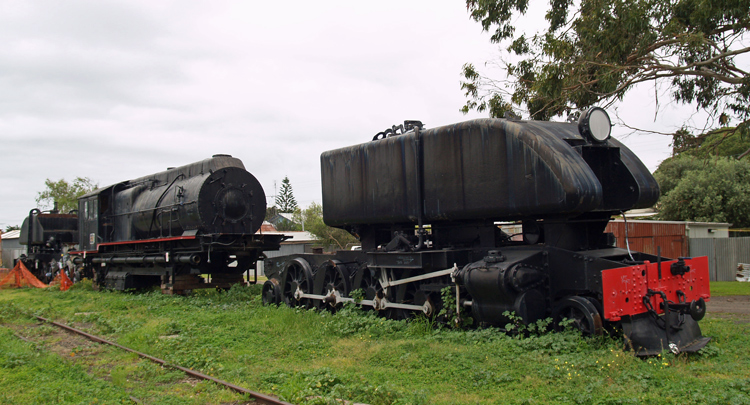
|
G 33 Last of the Australian Standard Garratts |

G 33 in three segments as recently delivered to the Bellarine Railway, Queenscliff.
The rear bunker and engine unit had already been dismantled for overhaul. 10 October 2013.
The Australian Standard Garratt (ASG) was proposed and designed by the Commonwealth Land Transport Board in 1942 in response to the urgent wartime need for powerful locomotives for the nations 3' 6" gauge railways. The design team was supervised by the WAGR Chief Mechanical Engineer Mr.
F. Mills and the ASG bears some similarity to his contemporary WAGR S-class 4-8-2 locomotives, including the distinctive boiler cowling. Sixty-five ASG locomotives were authorised for production with the components assembled at a number of Australian workshops:Newport Workshops (Vic) - 16
Islington Workshops (SA) - 12
Clyde Engineering (NSW) - 27
Midland Workshops (WA) - 10
The first ASG locomotives were in steam within 12 months of design starting, reflecting the wartime emergency conditions in which the class was conceived. They were immediately put into service and were initially successful, providing significant additional motive power for the heavy wartime traffic. However it seems that aspects of the design was too rushed as flaws became apparent and in time the ASGs became very unpopular with crews. Indeed the ASG locomotives were even subject to a strike action and a Royal Commission in WA. Construction ceased in December 1945 with 57 units assembled and most were destined for relatively short lives,
The ASG locomotives found use in across Australia's 3' 6" gauge railways, with a number changing ownership and finding further use after the war years:
25 ASG locomotives worked for the West Australian Government Railways. These received modifications following the 1945 Royal Commission however they were replaced by the more modern W and V-class steam locomotives and first generation diesels, with the last withdrawn in 1957.
6 ASG locomotives were acquired from the WAGR by the South Australian Railways as a stopgap on heavy Cockburn (Broken Hill) - Port Pirie ore trains, pending the arrival of the 400-class 4-8-2 + 2-8-4 Beyer-Garratts. These ASGs were condemned in early 1956.
23 ASG locomotives worked for a time in Queensland but were quickly withdrawn at the end of World War 2 and spent most of their time on storage sidings while awaiting a buyer. The excellent history of the Queensland Garratt and other articulated locomotives "Crimson Giants" includes a poignant series of photographs showing the Queensland ASG locomotives stored, boarded up and unwanted, at Mayne and Rocklea in the 1946 - 1950 period. Some were later sold to Tasmanian Government Railways, others to the Emu Bay Railway and the balance were scrapped in the 1950s. One was scrapped having never turned a wheel.
14 ASG locomotives worked for the Tasmanian Government Railways.
One of the more successful users of the ASG was the privately owned Emu Bay Railway in Tasmania, which purchased a number and made a number of improvements. Interestingly these ASGs replaced three Beyer Peacock 4-8-2 + 2-8-4 locomotives which had been supplied in 1929.
The lucky survivor of the ASG fleet is G33, which was being assembled at the Victorian Railways Newport Workshops in 1945 for either WA or Tasmania when the war ended and the ASG project stopped. Australian Portland Cement Limited were in the market for a new loco for their Fyansford cement works and were sufficiently interested to buy G33 and have Newport make modifications, particularly to the brakes (converted from vacuum to air), bufferbeams and drawgear to suit their requirements before taking delivery in late 1945.
G33 became the last ASG in existence following the scrapping of the Emu Bay Railway ASG locomotives in 1966. It last steamed in 1968 during a fan trip to the Fyansford works.
Fortunately G33 was among six steam locomotives donated for preservation by Australian Portland Cement, following closure of their limestone haulage railway in 1966. G33 is now named 'Albert Gunsser' after a regular driver at Australian Portland Cement.
G33 moved to the ARHS Railway Museum at North Williamstown in 1968, being delivered by road in 3 lorry loads. It was displayed at North Williamstown for many years, wearing either grey livery (as applied at the Fyansford works) and plain unlined black livery.
After more than 42 years displayed at North Williamstown, G33 moved to the Bellarine Railway in 2011 as the first step towards a return to steam; apparently it is in generally good condition and repair is relatively easy. My visit to the Bellarine Railway on 10 October 2013 found restoration work on the rear engine unit underway. The "Get G33 Moving" appeal has been launched to fund G33's return to service; details can be found on the Bellarine Railway website.
A number of other ASG remains are scattered throughout the country:
In Tasmania, an ASG boiler survives following a period of static industrial use. In addition, the TGR adopted ASG water tanks for stationary use as loco supply and 4 such tanks are stored at the Don River Railway's workshops. ASG driving wheels were also redeployed to four members of the M-class to create the MA class.
In Queensland some forward and rear water tanks apparently found use in council road works projects! An ASG water tank can be seen at the Rosewood Railway Museum, while a second example is stored at The Workshops museum, Ipswich.
In West Australia, several ASG boilers survive after being adapted for static steam raising; two remain at the former WAGR Midland Workshops and a third is now located at the Yarloop (sawmill) Workshops. A bunker is also reported to survive at Northam.
In Victoria, Australian Portland Cement also purchased the bogies and certain other unassembled components of G34 and G35, which were used to create various railway vehicles, some of which survive at the Bellarine Railway. A spare ASG boiler is also held in store at Laker's Siding.
Adrian Gunzberg provides a good account of the design and construction of the W-class in his authorative book "A history of WAGR steam locomotives". In addition, "Crimson Giants" gives a good account of the ASG story from the Queensland perspective, together with the more successful Beyer-Peacock Garratt locomotives which superceded them (as represented in preservation by 1009).
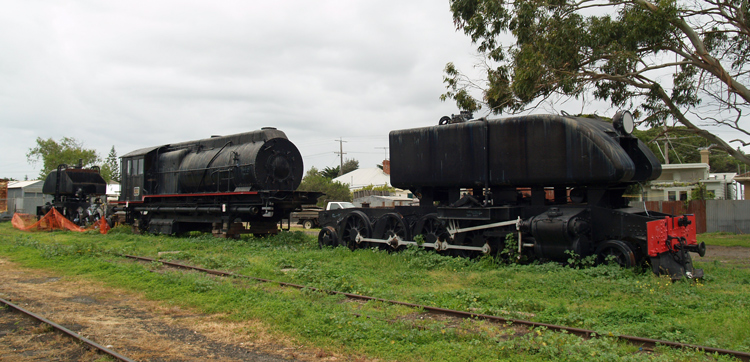
A second view of G33 as newly delivered to the Bellarine Railway at Queenscliff. 10 October 2013.
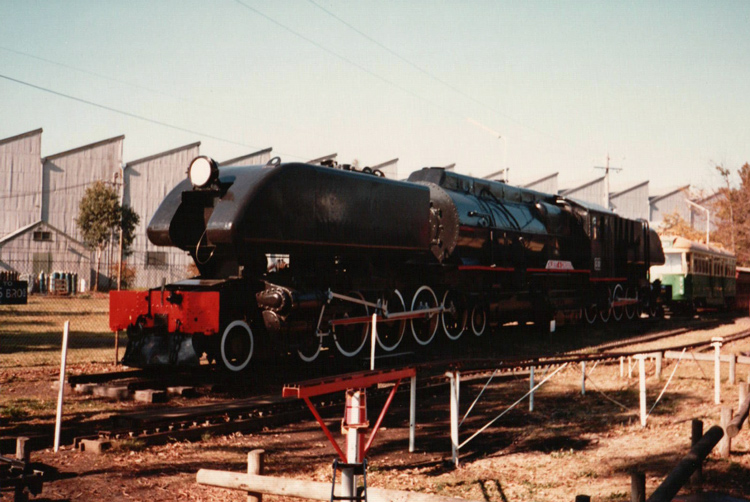
This scanned photo print shows G33 displayed at the ARHS North Williamstown museum in May 1986.
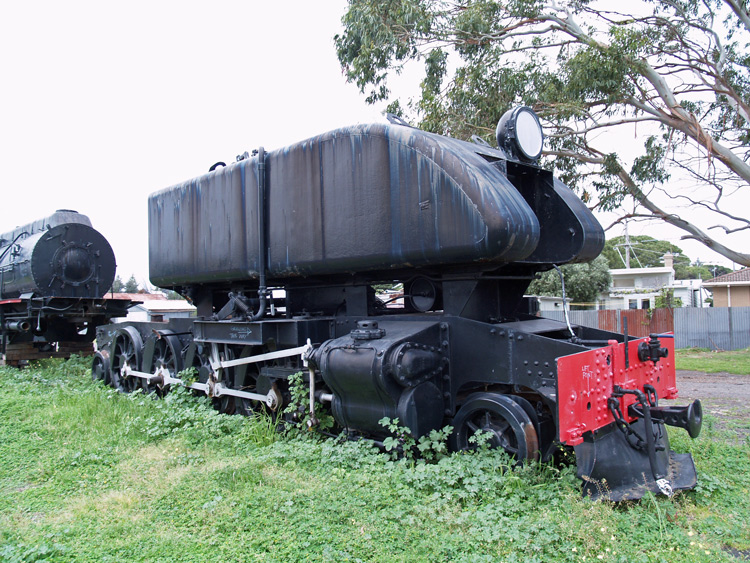
The front engine unit showing the distinctive ASG welded water tank. 10 October 2013.

This view of the ASG boiler unit shows one of the key advantages of the Garratt principle - the ability to accommodate a wide, deep firebox.
The boiler skyline casing was considered modern at the time but an unlikely extravagance for
a locomotive designed under wartime austerity.

The central boiler unit as delivered to Queenscliff.
The nameplate "Albert A Gunsser" honours a popular driver at the Fyansford cement works.
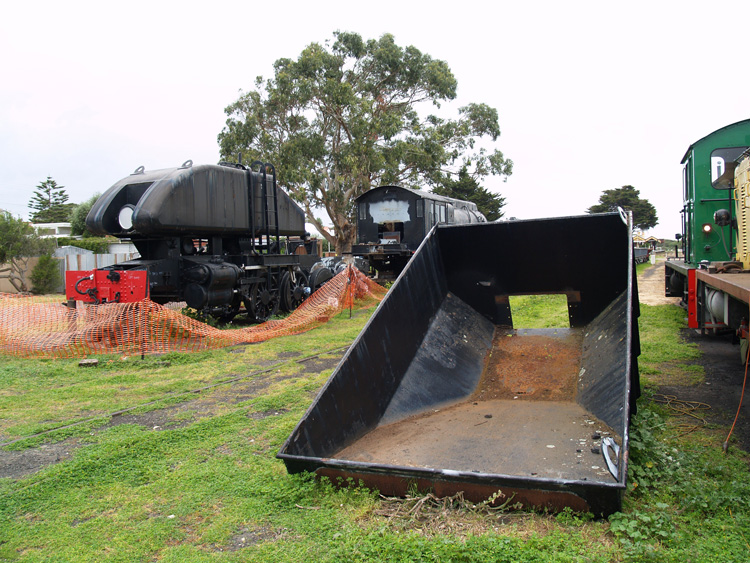
G 33's coal bunker
, lifted clear of the rear engine unit.
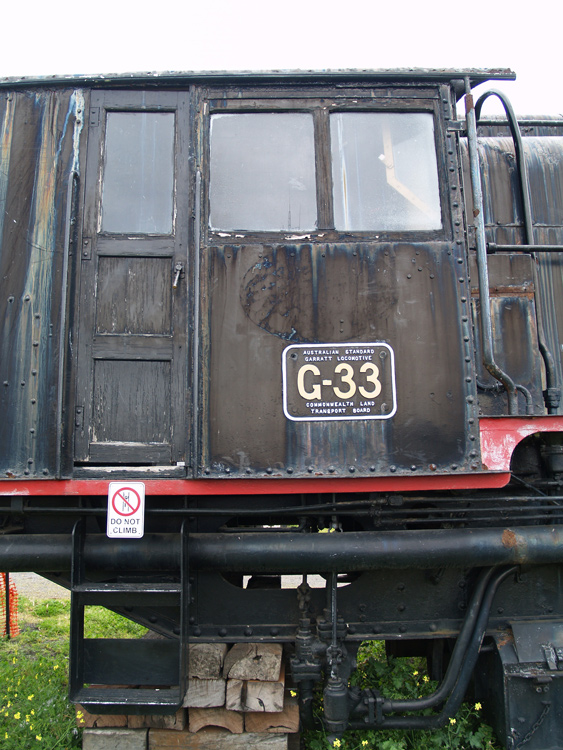
G33's cab
.
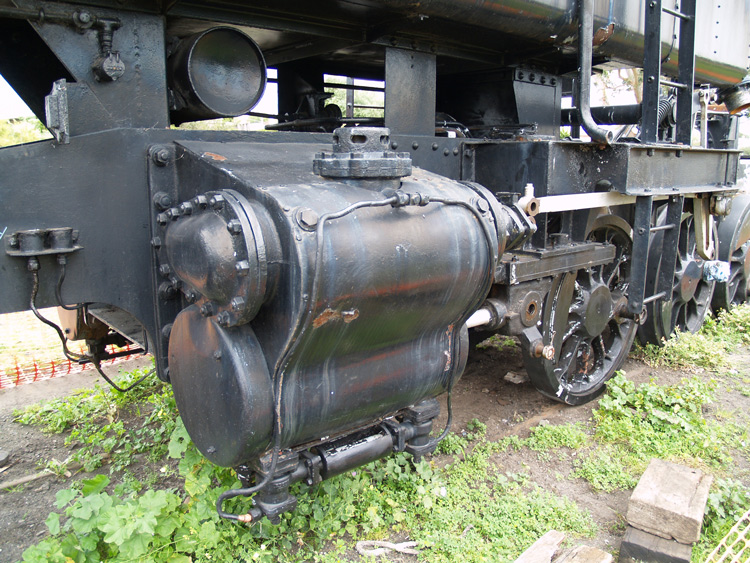
Detail of the cylinder on G 33's rear engine unit.

A detail view of the front engine unit, showing the bifurcated spokes on the
ASG driving wheels.The driving wheels are the same dimension as the WAGR S-class; perhaps the design & pattern was re-used.

G 33's cabside plates show the Commonwealth Land Transport Board parentage of the Australian Standard Garratts locomotives.
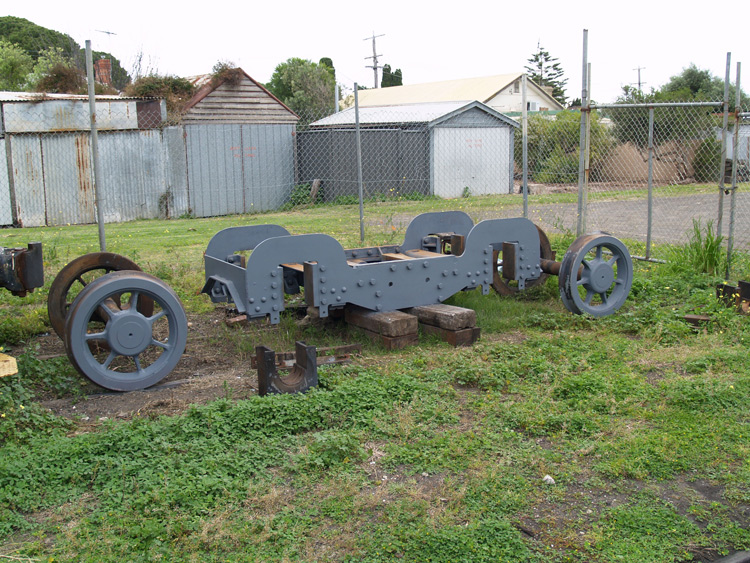
The four-wheel bogie from G 33's rear engine unit, dismantled for overhaul
.
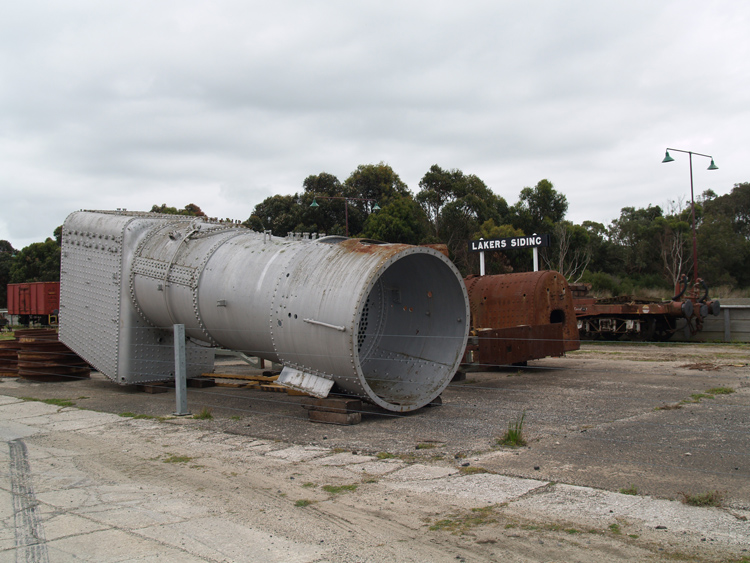
This spare ASG boiler is held by the Bellarine Railway in storage at their Lakers Siding depot.
I
A view of the front tubeplate reveals the
superheater flue tubes & firetubes, showing ASG engines were fitted with a 4-row superheater.
The ASG design shows some similarity to the contemporary WAGR S-class design, also developed by WAGR engineer F. Mills.
Phil Melling contributed this view of S549 on railtour duty at Dowerin on 10 December 2006.
The distinctive boiler cowling can be seen; originally this extended the full length of the boiler.
Cylinder, bogie and bifurcated driving wheel details are all visually similar to the ASG design.
References
|
a |
A. Gunzburg 'A history of WAGR steam locomotives', published by ARHS (Western Australian Division) 1984. |
|
b |
West A. M., 'Crimson Giants - The Articulated Steam Locomotives of Queensland Rail' published by the Australian Railway Historical Society, Queensland Division, 1995. |
|
c |
Fluck R. E., Sampson R., & Bird K. J. 'Steam locomotives and Railcars of the South Australian Railways', published by The Mile End Railway Museum (SA) Inc, 1986. |
Page updated: 19 October 2014